Wortelgoed
Wortelgoed planten (zoals heesters, hagen en bomen) die in de volle grond zijn gekweekt en tijdens de rustperiode worden gerooid en verkocht zonder pot of kluit.
De wortels zijn dus bloot, en dat heeft veel voordelen — mits ze goed worden behandeld.
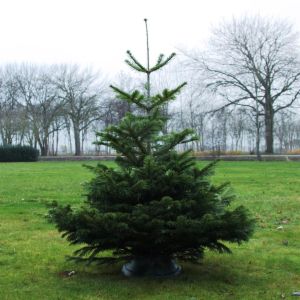 Abies Nordmanniana 25/50 cm EcoAbies Nordmanniana€ 3,25Voorraad 61De Abies Nordmanniana 25/50 cm Eco is een lichtgewicht, winterharde Nordmannspar zonder pot, perfect voor uw tuin. Lees verder
Abies Nordmanniana 25/50 cm EcoAbies Nordmanniana€ 3,25Voorraad 61De Abies Nordmanniana 25/50 cm Eco is een lichtgewicht, winterharde Nordmannspar zonder pot, perfect voor uw tuin. Lees verder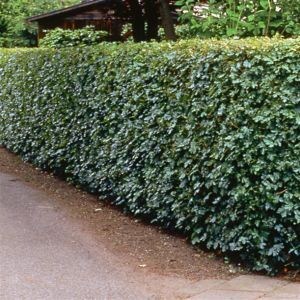 Acer Campestre 100/120 cm EcoAcer Campestre€ 14,95Voorraad 17Acer campestre Haag (Spaanse Aak) x 10 is een ideale haagplant voor het creëren van een dichte haag in jouw tuin. Deze haagplant is gemakkelijk te onderhouden en zorgt voor een mooie groene afscheiding. Lees verder
Acer Campestre 100/120 cm EcoAcer Campestre€ 14,95Voorraad 17Acer campestre Haag (Spaanse Aak) x 10 is een ideale haagplant voor het creëren van een dichte haag in jouw tuin. Deze haagplant is gemakkelijk te onderhouden en zorgt voor een mooie groene afscheiding. Lees verder Acer Palmatum 100/120 cm EcoAcer platanoides ' Crimson Sentry'Speciale prijs € 5,55 Normale prijs € 6,95Voorraad 100+De Acer Palmatum 40/60 cm ECO is een prachtige Japanse Esdoorn, ideaal voor iedere tuin. Lees verder
Acer Palmatum 100/120 cm EcoAcer platanoides ' Crimson Sentry'Speciale prijs € 5,55 Normale prijs € 6,95Voorraad 100+De Acer Palmatum 40/60 cm ECO is een prachtige Japanse Esdoorn, ideaal voor iedere tuin. Lees verder Amelanchier lamarckii 60/80 cm EcoAmelanchier lamarckii€ 6,95Voorraad 80Amelanchier, ook wel Krentenboom, is een struik die het hele jaar door de meest uiteenlopende kleuraccenten aan uw tuin toevoegd. Lees verder
Amelanchier lamarckii 60/80 cm EcoAmelanchier lamarckii€ 6,95Voorraad 80Amelanchier, ook wel Krentenboom, is een struik die het hele jaar door de meest uiteenlopende kleuraccenten aan uw tuin toevoegd. Lees verder Amelanchier Spicata 140-160 cm EcoAmelanchier lamarckiiSpeciale prijs € 18,35 Normale prijs € 22,95Voorraad 90De Amelanchier Spicata 40-60 cm Eco is een winterharde en vriendelijke plant, ideaal voor zonnige posities. Lees verder
Amelanchier Spicata 140-160 cm EcoAmelanchier lamarckiiSpeciale prijs € 18,35 Normale prijs € 22,95Voorraad 90De Amelanchier Spicata 40-60 cm Eco is een winterharde en vriendelijke plant, ideaal voor zonnige posities. Lees verder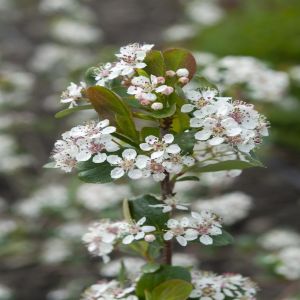 Aronia Melanocarpa 60/80 cm EcoAronia Prunifolia NeroSpeciale prijs € 14,35 Normale prijs € 17,95Voorraad 57De Zwarte Aroniamispel (Aronia melanocarpa 40/60 cm Eco) is een sterke plant met heerlijke bessen en mooie bladeren. Lees verder
Aronia Melanocarpa 60/80 cm EcoAronia Prunifolia NeroSpeciale prijs € 14,35 Normale prijs € 17,95Voorraad 57De Zwarte Aroniamispel (Aronia melanocarpa 40/60 cm Eco) is een sterke plant met heerlijke bessen en mooie bladeren. Lees verder Berberis Julianea 40/60 cm EcoEco Berberis Julianea€ 27,95Voorraad 28De ECO Berberis (Berberis julianae) is een duurzame keuze voor uw tuin. Blijvend groen en gemakkelijk te kweken. Lees verder
Berberis Julianea 40/60 cm EcoEco Berberis Julianea€ 27,95Voorraad 28De ECO Berberis (Berberis julianae) is een duurzame keuze voor uw tuin. Blijvend groen en gemakkelijk te kweken. Lees verder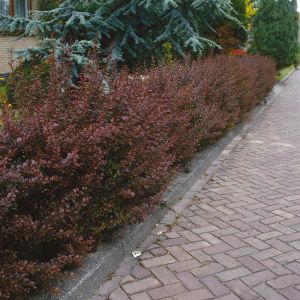 Berberis thunbergii 100/120 cm EcoEco Berberis thunbergii€ 22,95Voorraad 28Berberis thunbergii Eco, ook wel Japanse berberis genoemd, is een ideale keuze voor je haag. Lees verder
Berberis thunbergii 100/120 cm EcoEco Berberis thunbergii€ 22,95Voorraad 28Berberis thunbergii Eco, ook wel Japanse berberis genoemd, is een ideale keuze voor je haag. Lees verder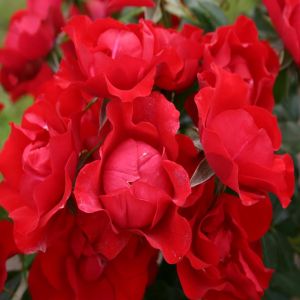 Bodembedekkende Roos Black ForestGround Covering Rose Black ForestSpeciale prijs € 6,80 Normale prijs € 8,50Voorraad 16Bodembedekkende Roos Black Forest is een schitterende, geurende, doorbloeiende, rode trosroos met donkergroen blad die ziekteresistent is. Lees verder
Bodembedekkende Roos Black ForestGround Covering Rose Black ForestSpeciale prijs € 6,80 Normale prijs € 8,50Voorraad 16Bodembedekkende Roos Black Forest is een schitterende, geurende, doorbloeiende, rode trosroos met donkergroen blad die ziekteresistent is. Lees verder Bodembedekkende Roos Diamant RoseGround Covering Rose Diamant€ 8,50Nog maar 7 beschikbaarBodembedekkende Roos Diamant Rose produceert trossen vol heerlijk geurende witte bloemen met gele centra op glanzend groene bladeren. ... Lees verder
Bodembedekkende Roos Diamant RoseGround Covering Rose Diamant€ 8,50Nog maar 7 beschikbaarBodembedekkende Roos Diamant Rose produceert trossen vol heerlijk geurende witte bloemen met gele centra op glanzend groene bladeren. ... Lees verder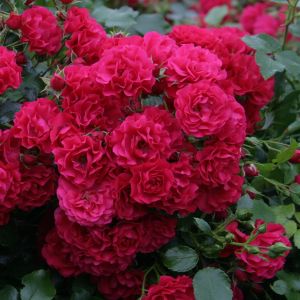 Bodembedekkende Roos GärtnerfreudeGround Covering Rose Gärtnerfreude (Toscana)Speciale prijs € 7,95 Normale prijs € 9,95Nog maar 5 beschikbaarBodembedekkende Roos Gärtnerfreudei is een licht geurende, rode trosroos. Produceert het hele seizoen massa's van karmijnrode bloemen. Lees verder
Bodembedekkende Roos GärtnerfreudeGround Covering Rose Gärtnerfreude (Toscana)Speciale prijs € 7,95 Normale prijs € 9,95Nog maar 5 beschikbaarBodembedekkende Roos Gärtnerfreudei is een licht geurende, rode trosroos. Produceert het hele seizoen massa's van karmijnrode bloemen. Lees verder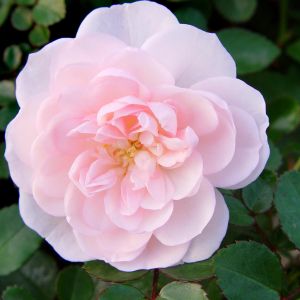 Bodembedekkende Roos Sea FoamGround Covering Rose 'Seafoam'Speciale prijs € 7,60 Normale prijs € 9,50Voorraad 26Met deze Sea Foam roos kunt u snel de bodem bedekken. Sea Foam zorgt voor een tapijt aan prachtige crème-witte bloemen die lichtroze worden. Lees verder
Bodembedekkende Roos Sea FoamGround Covering Rose 'Seafoam'Speciale prijs € 7,60 Normale prijs € 9,50Voorraad 26Met deze Sea Foam roos kunt u snel de bodem bedekken. Sea Foam zorgt voor een tapijt aan prachtige crème-witte bloemen die lichtroze worden. Lees verder Bodembedekkende Roos SwanyGround Covering Rose 'Swany'Speciale prijs € 7,15 Normale prijs € 8,95Voorraad 24Met de Bodembedekkende Roos Swany, kunt u snel de bodem bedekken. Deze robuuste rozen zijn ook geschikt voor teelt in bloembakken. Lees verder
Bodembedekkende Roos SwanyGround Covering Rose 'Swany'Speciale prijs € 7,15 Normale prijs € 8,95Voorraad 24Met de Bodembedekkende Roos Swany, kunt u snel de bodem bedekken. Deze robuuste rozen zijn ook geschikt voor teelt in bloembakken. Lees verder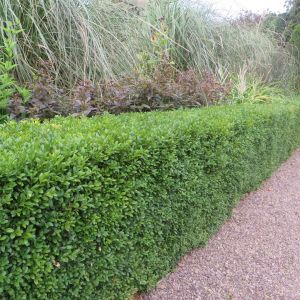 Buxus sempervirens 100/120 cm EcoBuxus sempervirensSpeciale prijs € 10,90 Normale prijs € 14,95Voorraad 56De Groene buksus is een winterharde, eco-vriendelijke haagplant die makkelijk te kweken is. Lees verder
Buxus sempervirens 100/120 cm EcoBuxus sempervirensSpeciale prijs € 10,90 Normale prijs € 14,95Voorraad 56De Groene buksus is een winterharde, eco-vriendelijke haagplant die makkelijk te kweken is. Lees verder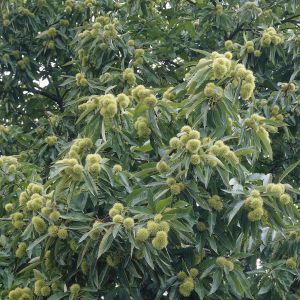 Castanea Sativa 100/120 EcoCastanea Sativa€ 5,95Voorraad 80De Gewone kastanjeboom 40/60 biedt u mooi, eetbaar fruit en een prachtige bloei met witte bloemen. Lees verder
Castanea Sativa 100/120 EcoCastanea Sativa€ 5,95Voorraad 80De Gewone kastanjeboom 40/60 biedt u mooi, eetbaar fruit en een prachtige bloei met witte bloemen. Lees verder Catalpa Bignonioides 100/120 cm EcoEco Catalpa Bignonioides€ 7,95Voorraad 77De Compacte Catalpa is een eco-vriendelijke boom met blote wortel, ideaal voor zonnige en halfschaduw plekken. Lees verder
Catalpa Bignonioides 100/120 cm EcoEco Catalpa Bignonioides€ 7,95Voorraad 77De Compacte Catalpa is een eco-vriendelijke boom met blote wortel, ideaal voor zonnige en halfschaduw plekken. Lees verder Corylus avellana 100/120 EcoHazelnut Corylus 'avellana'Speciale prijs € 5,20 Normale prijs € 6,50Voorraad 96De Hazelaar (Corylus avellana) 40/60 Eco is een duurzame keuze zonder plastic pot, met eetbare hazelnoten. Lees verder
Corylus avellana 100/120 EcoHazelnut Corylus 'avellana'Speciale prijs € 5,20 Normale prijs € 6,50Voorraad 96De Hazelaar (Corylus avellana) 40/60 Eco is een duurzame keuze zonder plastic pot, met eetbare hazelnoten. Lees verder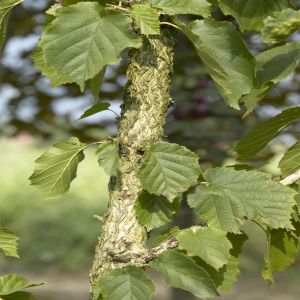 Corylus Colurna 60/80 EcoHazelnut Corylus 'avellana'Speciale prijs € 6,35 Normale prijs € 7,95Voorraad 93Corylus Colurna 30/50 Eco is een gewelfde hazelaar met eetbare noten, ideaal voor elke tuin. Lees verder
Corylus Colurna 60/80 EcoHazelnut Corylus 'avellana'Speciale prijs € 6,35 Normale prijs € 7,95Voorraad 93Corylus Colurna 30/50 Eco is een gewelfde hazelaar met eetbare noten, ideaal voor elke tuin. Lees verder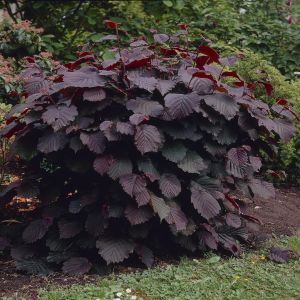 Corylus maxima Purpurea 60/80 cm EcoCorylus Colurna€ 9,50Voorraad 85De Corylus maxima 'Purpurea' Eco, oftewel Gele Hazelaar, is een duurzame boom met eetbare vruchten. Perfect voor uw tuin. Lees verder
Corylus maxima Purpurea 60/80 cm EcoCorylus Colurna€ 9,50Voorraad 85De Corylus maxima 'Purpurea' Eco, oftewel Gele Hazelaar, is een duurzame boom met eetbare vruchten. Perfect voor uw tuin. Lees verder Cytisus Scoparius 40/60 cm EcoCytisus Apricot Gem€ 9,50Voorraad 28De Boksenhout Apricot Gem is een eco-vriendelijke en makkelijk te kweken plant met prachtige bloei van het voorjaar tot de zomer. Lees verder
Cytisus Scoparius 40/60 cm EcoCytisus Apricot Gem€ 9,50Voorraad 28De Boksenhout Apricot Gem is een eco-vriendelijke en makkelijk te kweken plant met prachtige bloei van het voorjaar tot de zomer. Lees verder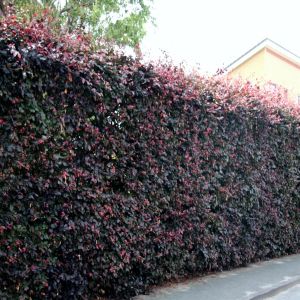 Fagus sylvatica atropurpurea 80/100 cm EcoFagus sylvatica atropurpurea€ 42,95Nog maar 2 beschikbaarDe Fagus sylvatica atropurpurea is de rode versie van de bekende beukenhaag. Het nieuwe blad in het voorjaar is in eerste instantie groen maar... Lees verder
Fagus sylvatica atropurpurea 80/100 cm EcoFagus sylvatica atropurpurea€ 42,95Nog maar 2 beschikbaarDe Fagus sylvatica atropurpurea is de rode versie van de bekende beukenhaag. Het nieuwe blad in het voorjaar is in eerste instantie groen maar... Lees verder Floribunda Roos Arthur BellFloribunda Rose Arthur BellSpeciale prijs € 6,00 Normale prijs € 7,50Voorraad 22Floribunda Roos Arthur Bell produceert non-stop ontzettend veel heldergele bloemen. De bloemen hebben een heerlijke geur. Perfect voor een boeket.... Lees verder
Floribunda Roos Arthur BellFloribunda Rose Arthur BellSpeciale prijs € 6,00 Normale prijs € 7,50Voorraad 22Floribunda Roos Arthur Bell produceert non-stop ontzettend veel heldergele bloemen. De bloemen hebben een heerlijke geur. Perfect voor een boeket.... Lees verder Floribunda Roos KimonoFloribunda Rose Kimono€ 7,50Nog maar 6 beschikbaarFloribunda Roos Kimono is een sterk geurende doorbloeiende roze trosroos en bloeit in een zacht roze tint vanaf de vroege zomer tot de eerste vorst. Lees verder
Floribunda Roos KimonoFloribunda Rose Kimono€ 7,50Nog maar 6 beschikbaarFloribunda Roos Kimono is een sterk geurende doorbloeiende roze trosroos en bloeit in een zacht roze tint vanaf de vroege zomer tot de eerste vorst. Lees verder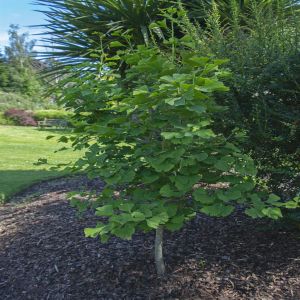 Ginkgo biloba 60/80 cm EcoGinkgo biloba€ 3,75Voorraad 28De Ginkgo biloba Eco 60 cm, ook wel Japanse notenboom, is een lichtgewicht en eco-vriendelijk alternatief zonder pot. Lees verder
Ginkgo biloba 60/80 cm EcoGinkgo biloba€ 3,75Voorraad 28De Ginkgo biloba Eco 60 cm, ook wel Japanse notenboom, is een lichtgewicht en eco-vriendelijk alternatief zonder pot. Lees verder Grootbloemige Roos Dame Du CoeurDame du Coeur Hybrid Tea RoseSpeciale prijs € 6,10 Normale prijs € 7,50Voorraad 17De Grootbloemige Roos Dame du Coeur is een sterk geurende rode roos met glanzend groen blad. Lees verder
Grootbloemige Roos Dame Du CoeurDame du Coeur Hybrid Tea RoseSpeciale prijs € 6,10 Normale prijs € 7,50Voorraad 17De Grootbloemige Roos Dame du Coeur is een sterk geurende rode roos met glanzend groen blad. Lees verder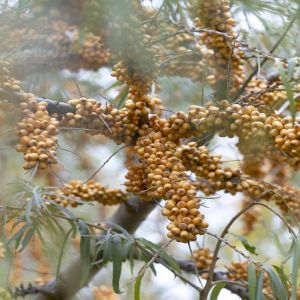 Hippophae Rhamnoides 140/160 cm EcoHippophae RhamnoidesSpeciale prijs € 18,35 Normale prijs € 22,95Voorraad 95De Hippophae Rhamnoides 60/80 cm Eco, ook bekend als Zee-buckthorn, is een duurzame plant die zorgt voor eetbare vruchten. Lees verder
Hippophae Rhamnoides 140/160 cm EcoHippophae RhamnoidesSpeciale prijs € 18,35 Normale prijs € 22,95Voorraad 95De Hippophae Rhamnoides 60/80 cm Eco, ook bekend als Zee-buckthorn, is een duurzame plant die zorgt voor eetbare vruchten. Lees verder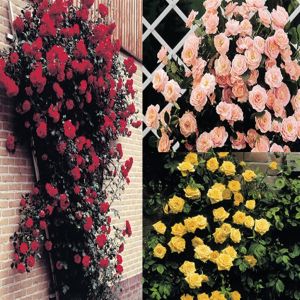 Klimroos Collectie in 3 KleurenSpeciale prijs € 23,15 Normale prijs € 28,95Nog maar 10 beschikbaarKlimrozen zijn bij velen favoriet en terecht. Ze bedekken in de zomer hele wanden, schuttingen en muren met een deken van kleur en geur. Ze zijn... Lees verder
Klimroos Collectie in 3 KleurenSpeciale prijs € 23,15 Normale prijs € 28,95Nog maar 10 beschikbaarKlimrozen zijn bij velen favoriet en terecht. Ze bedekken in de zomer hele wanden, schuttingen en muren met een deken van kleur en geur. Ze zijn... Lees verder Klimroos Coral DawnClimbing Rose 'Coral Dawn'Speciale prijs € 7,95 Normale prijs € 9,95Voorraad 81Klimrozen zijn bij velen favoriet en terecht, ze bedekken in de zomer hele wanden - schuttingen etc. met een deken van kleur en geur. Lees verder
Klimroos Coral DawnClimbing Rose 'Coral Dawn'Speciale prijs € 7,95 Normale prijs € 9,95Voorraad 81Klimrozen zijn bij velen favoriet en terecht, ze bedekken in de zomer hele wanden - schuttingen etc. met een deken van kleur en geur. Lees verder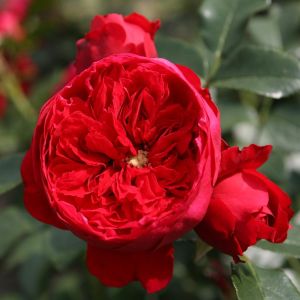 Klimroos FlorentinaClimbing Rose FlorentinaSpeciale prijs € 9,55 Normale prijs € 11,95Voorraad 14Klimroos Florentina is een volle, rode, doorbloeiende roos die een overvloed van grote clusters dubbele geurige bloemen produceert. ... Lees verder
Klimroos FlorentinaClimbing Rose FlorentinaSpeciale prijs € 9,55 Normale prijs € 11,95Voorraad 14Klimroos Florentina is een volle, rode, doorbloeiende roos die een overvloed van grote clusters dubbele geurige bloemen produceert. ... Lees verder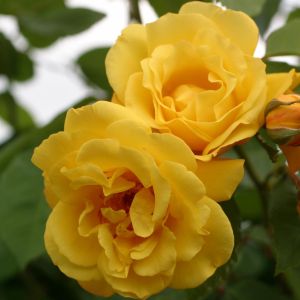 Klimroos Golden GateClimbing Rose Golden GateSpeciale prijs € 9,55 Normale prijs € 11,95Voorraad 17Klimroos Golden Gate is een gele, doorbloeiende, licht geurende roos. Bloeit met opvallend goudgele bloesems en een heerlijke lichte citrusgeur. Lees verder
Klimroos Golden GateClimbing Rose Golden GateSpeciale prijs € 9,55 Normale prijs € 11,95Voorraad 17Klimroos Golden Gate is een gele, doorbloeiende, licht geurende roos. Bloeit met opvallend goudgele bloesems en een heerlijke lichte citrusgeur. Lees verder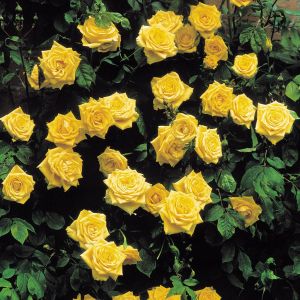 Klimroos Golden ShowerClimbing Rose 'Golden Showers'€ 9,95Voorraad 78Klimrozen zijn bij velen favoriet en terecht, ze bedekken in de zomer hele wanden - schuttingen etc. met een deken van kleur en geur. Lees verder
Klimroos Golden ShowerClimbing Rose 'Golden Showers'€ 9,95Voorraad 78Klimrozen zijn bij velen favoriet en terecht, ze bedekken in de zomer hele wanden - schuttingen etc. met een deken van kleur en geur. Lees verder Klimroos IcebergClimbing Rose (Floribunda rose) 'Iceberg'Speciale prijs € 7,95 Normale prijs € 9,95Voorraad 15Een mooie zuivere witte roos gebruikt om te klimmen en als een vrijstaande Polyantha. Hij heeft een goede weerstand tegen ziekten. Lees verder
Klimroos IcebergClimbing Rose (Floribunda rose) 'Iceberg'Speciale prijs € 7,95 Normale prijs € 9,95Voorraad 15Een mooie zuivere witte roos gebruikt om te klimmen en als een vrijstaande Polyantha. Hij heeft een goede weerstand tegen ziekten. Lees verder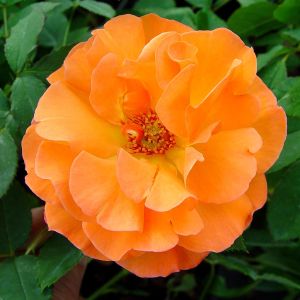 Klimroos MetanoiaClimbing Rose 'Metanoia'Speciale prijs € 7,25 Normale prijs € 8,95Voorraad 34Prachtige fel oranje klimroos, klimt op tot wel 3 meter en heeft een lichte roosgeur. Zeer geschikt om een pergola mee op te fleuren! Lees verder
Klimroos MetanoiaClimbing Rose 'Metanoia'Speciale prijs € 7,25 Normale prijs € 8,95Voorraad 34Prachtige fel oranje klimroos, klimt op tot wel 3 meter en heeft een lichte roosgeur. Zeer geschikt om een pergola mee op te fleuren! Lees verder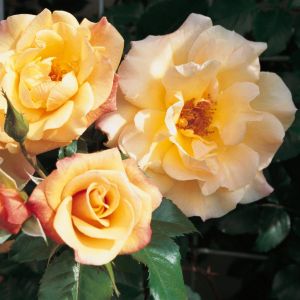 Klimroos MoonlightClimbing Rose MoonlightSpeciale prijs € 9,90 Normale prijs € 11,95Voorraad 11Klimroos Moonlight is een oranje-gele, geurende, doorbloeiende roos en is zeer uitzonderlijk door zijn vele veranderde kleuren. Lees verder
Klimroos MoonlightClimbing Rose MoonlightSpeciale prijs € 9,90 Normale prijs € 11,95Voorraad 11Klimroos Moonlight is een oranje-gele, geurende, doorbloeiende roos en is zeer uitzonderlijk door zijn vele veranderde kleuren. Lees verder Klimroos New DawnClimbing Rose New DawnSpeciale prijs € 7,95 Normale prijs € 9,95Voorraad 88De Klimroos New Dawn is een lichtroze, licht geurende, doorbloeiende roos die medium grote halfdubbele bloemen produceert met een zoete geur. Lees verder
Klimroos New DawnClimbing Rose New DawnSpeciale prijs € 7,95 Normale prijs € 9,95Voorraad 88De Klimroos New Dawn is een lichtroze, licht geurende, doorbloeiende roos die medium grote halfdubbele bloemen produceert met een zoete geur. Lees verder Klimroos Pauls ScarletPaul's Scarlet ClimberSpeciale prijs € 7,95 Normale prijs € 9,95Voorraad 64Klimrozen zijn bij velen favoriet en terecht, ze bedekken in de zomer hele wanden - schuttingen etc. met een deken van kleur en geur. Lees verder
Klimroos Pauls ScarletPaul's Scarlet ClimberSpeciale prijs € 7,95 Normale prijs € 9,95Voorraad 64Klimrozen zijn bij velen favoriet en terecht, ze bedekken in de zomer hele wanden - schuttingen etc. met een deken van kleur en geur. Lees verder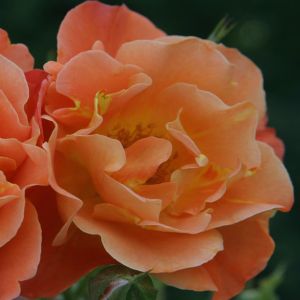 Klimroos WesterlandClimbing Rose WesterlandSpeciale prijs € 9,55 Normale prijs € 11,95Voorraad 35Klimroos Westerland is een winterharde heerlijk geurende, doorbloeiende roos, die trossen vol warme abrikoos-oranje gekleurde bloemen produceert.... Lees verder
Klimroos WesterlandClimbing Rose WesterlandSpeciale prijs € 9,55 Normale prijs € 11,95Voorraad 35Klimroos Westerland is een winterharde heerlijk geurende, doorbloeiende roos, die trossen vol warme abrikoos-oranje gekleurde bloemen produceert.... Lees verder Laburnum anagyroides 100/120 cm EcoLaburnum anagyroidesSpeciale prijs € 6,35 Normale prijs € 7,95Voorraad 70Goudenregen (Laburnum anagyroides) is een plant uit de Vlinderbloemen-familie, die zijn naam dankt aan de lange hangende bloemtrossen. Lees verder
Laburnum anagyroides 100/120 cm EcoLaburnum anagyroidesSpeciale prijs € 6,35 Normale prijs € 7,95Voorraad 70Goudenregen (Laburnum anagyroides) is een plant uit de Vlinderbloemen-familie, die zijn naam dankt aan de lange hangende bloemtrossen. Lees verder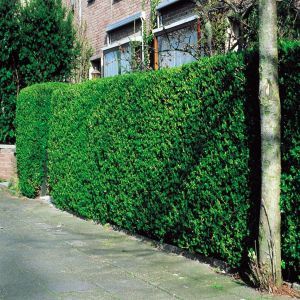 Ligustrum Ovalifolium Privet 100/120 cm EcoLigustrum ovalifolium 'siberian privet'€ 14,95Voorraad 29Ligusterhagen zijn sterk, snel groeiend en toch eenvoudig te snoeien. Ze zijn bestand tegen wind en storm, dus kunnen goed tegen een zeeklimaat. Lees verder
Ligustrum Ovalifolium Privet 100/120 cm EcoLigustrum ovalifolium 'siberian privet'€ 14,95Voorraad 29Ligusterhagen zijn sterk, snel groeiend en toch eenvoudig te snoeien. Ze zijn bestand tegen wind en storm, dus kunnen goed tegen een zeeklimaat. Lees verder Ligustrum Vulgare Atrovirens 60/80 cm EcoEco Ligustrum Vulgare AtrovirensSpeciale prijs € 13,55 Normale prijs € 16,95Voorraad 36ECO Liguster is een winterharde haagplant met een hoogte van 60-80 cm, perfect voor een mooie groene afscheiding. Lees verder
Ligustrum Vulgare Atrovirens 60/80 cm EcoEco Ligustrum Vulgare AtrovirensSpeciale prijs € 13,55 Normale prijs € 16,95Voorraad 36ECO Liguster is een winterharde haagplant met een hoogte van 60-80 cm, perfect voor een mooie groene afscheiding. Lees verder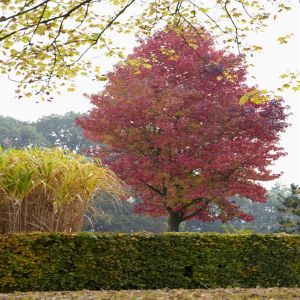 Liquidambar styraciflua 60/80 cm EcoLiquidambar styracifluaSpeciale prijs € 6,35 Normale prijs € 7,95Voorraad 88De Liquidambar styraciflua 30/50 cm Eco is een blote wortelplant die ideaal is voor zonnige plekken in uw tuin. Lees verder
Liquidambar styraciflua 60/80 cm EcoLiquidambar styracifluaSpeciale prijs € 6,35 Normale prijs € 7,95Voorraad 88De Liquidambar styraciflua 30/50 cm Eco is een blote wortelplant die ideaal is voor zonnige plekken in uw tuin. Lees verder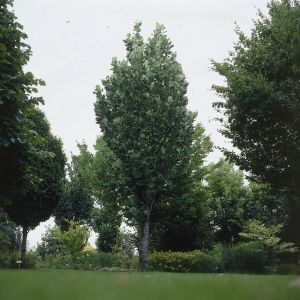 Liriodendron tulipifera 100/120 cm EcoLiriodendron tulipiferaSpeciale prijs € 3,95 Normale prijs € 4,95Voorraad 87De Liriodendron tulipifera 50/60 cm Eco is een lichte, blote wortel boom die gemakkelijk te planten en onderhouden is. Lees verder
Liriodendron tulipifera 100/120 cm EcoLiriodendron tulipiferaSpeciale prijs € 3,95 Normale prijs € 4,95Voorraad 87De Liriodendron tulipifera 50/60 cm Eco is een lichte, blote wortel boom die gemakkelijk te planten en onderhouden is. Lees verder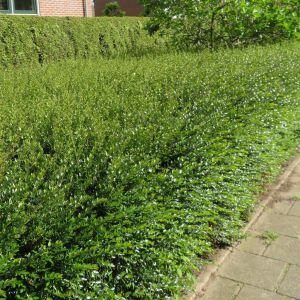 Lonicera Nitida Maigrun 20/40 cm EcoLonicera Nitida Maigrun€ 17,95Voorraad 13De Maigrun Kamperfoelie is een eco-vriendelijke, makkelijk te kweken struik zonder pot die perfect is voor elke tuin. Lees verder
Lonicera Nitida Maigrun 20/40 cm EcoLonicera Nitida Maigrun€ 17,95Voorraad 13De Maigrun Kamperfoelie is een eco-vriendelijke, makkelijk te kweken struik zonder pot die perfect is voor elke tuin. Lees verder Mahonia aquifolium 60-80 cm EcoMahonia aquifoliumSpeciale prijs € 7,95 Normale prijs € 9,95Voorraad 49Mahonia aquifolium 30-50 cm Eco, ook wel Berberis, is een winterharde en gemakkelijk te kweken plant. Perfect voor halfschaduw. Lees verder
Mahonia aquifolium 60-80 cm EcoMahonia aquifoliumSpeciale prijs € 7,95 Normale prijs € 9,95Voorraad 49Mahonia aquifolium 30-50 cm Eco, ook wel Berberis, is een winterharde en gemakkelijk te kweken plant. Perfect voor halfschaduw. Lees verder Morus Alba 140/160 cm EcoMorus AlbaSpeciale prijs € 19,95 Normale prijs € 24,95Voorraad 93De Morus Alba 40/60 cm Eco, ook wel bekend als de Witte moerbei, is een prachtige fruitboom met eetbare vruchten. Lees verder
Morus Alba 140/160 cm EcoMorus AlbaSpeciale prijs € 19,95 Normale prijs € 24,95Voorraad 93De Morus Alba 40/60 cm Eco, ook wel bekend als de Witte moerbei, is een prachtige fruitboom met eetbare vruchten. Lees verder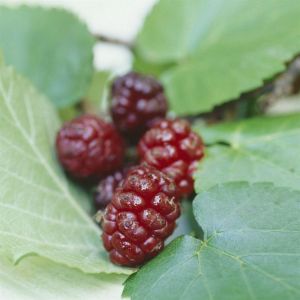 Morus Nigra 100/120 cm EcoMorus NigraSpeciale prijs € 7,15 Normale prijs € 8,95Voorraad 87De Morus Nigra 40/60 cm Eco is een duurzame zwarte moerbei zonder plastic pot, ideaal voor uw tuin. Lees verder
Morus Nigra 100/120 cm EcoMorus NigraSpeciale prijs € 7,15 Normale prijs € 8,95Voorraad 87De Morus Nigra 40/60 cm Eco is een duurzame zwarte moerbei zonder plastic pot, ideaal voor uw tuin. Lees verder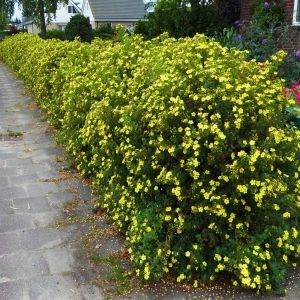
 Prunus avium 60/80 cm EcoPrunus aviumSpeciale prijs € 6,35 Normale prijs € 7,95Voorraad 100+De Prunus avium 40/60 cm Eco, ook wel zoete kers genoemd, is een makkelijke boom voor jouw tuin. Lees verder
Prunus avium 60/80 cm EcoPrunus aviumSpeciale prijs € 6,35 Normale prijs € 7,95Voorraad 100+De Prunus avium 40/60 cm Eco, ook wel zoete kers genoemd, is een makkelijke boom voor jouw tuin. Lees verder
What is bare root?
Bare root plants are shrubs or trees grown in open ground and lifted during dormancy (autumn or early spring). They are supplied without a pot and without a soil ball. This is a traditional and sustainable cultivation method.
Advantages of bare root
- Lower price: significantly cheaper than potted or balled plants.
- Eco-friendly: no plastic pots, lower weight, fewer materials.
- Easy to handle: lightweight and convenient for larger quantities.
- Quick root establishment: plants produce new roots rapidly after planting.
- Wide selection: many species available in the appropriate season.
Considerations and notes
- Limited planting window: available only during dormancy (roughly October to April, when soil is not frozen).
- Risk of drying out: exposed roots must never dry – this is the main risk.
- Plant promptly: plant immediately upon arrival or heel in temporarily.
- Delivery appearance: usually leafless due to dormancy – they will leaf out in spring.
Planting instructions for bare root
Key point: roots must not dry out. Keep them slightly moist until planting.
Preparation
- Plan ahead: for larger numbers, prepare trenches or planting holes before delivery to speed up planting.
- Check soil: loose and well-draining; improve heavy clay with compost or sand.
- Inspect plants on arrival: roots should be moist and flexible.
Hydration on arrival
- Soak roots in water for 1–2 hours after delivery.
- If you cannot plant immediately, wrap roots in moist paper or burlap.
- Do not expose roots to sun or wind – they dry very quickly.
Planting
- Dig a planting hole at least twice as wide as the root system.
- Loosen the base and mix in some compost.
- Set the plant upright with the root collar just below the surface.
- Spread roots evenly and backfill with soil.
- Firm the soil gently for good contact.
- Water generously, even if the soil seems moist.
Aftercare
- Keep soil evenly moist for the first weeks.
- Apply mulch (leaves, bark) to reduce evaporation.
- For hedges, use a line to keep rows straight.
- Stake young trees for stability.
Tip
If planting is delayed, heel plants in temporarily: lay them at an angle in a trench and cover the roots with moist soil or peat to keep them in good condition.

